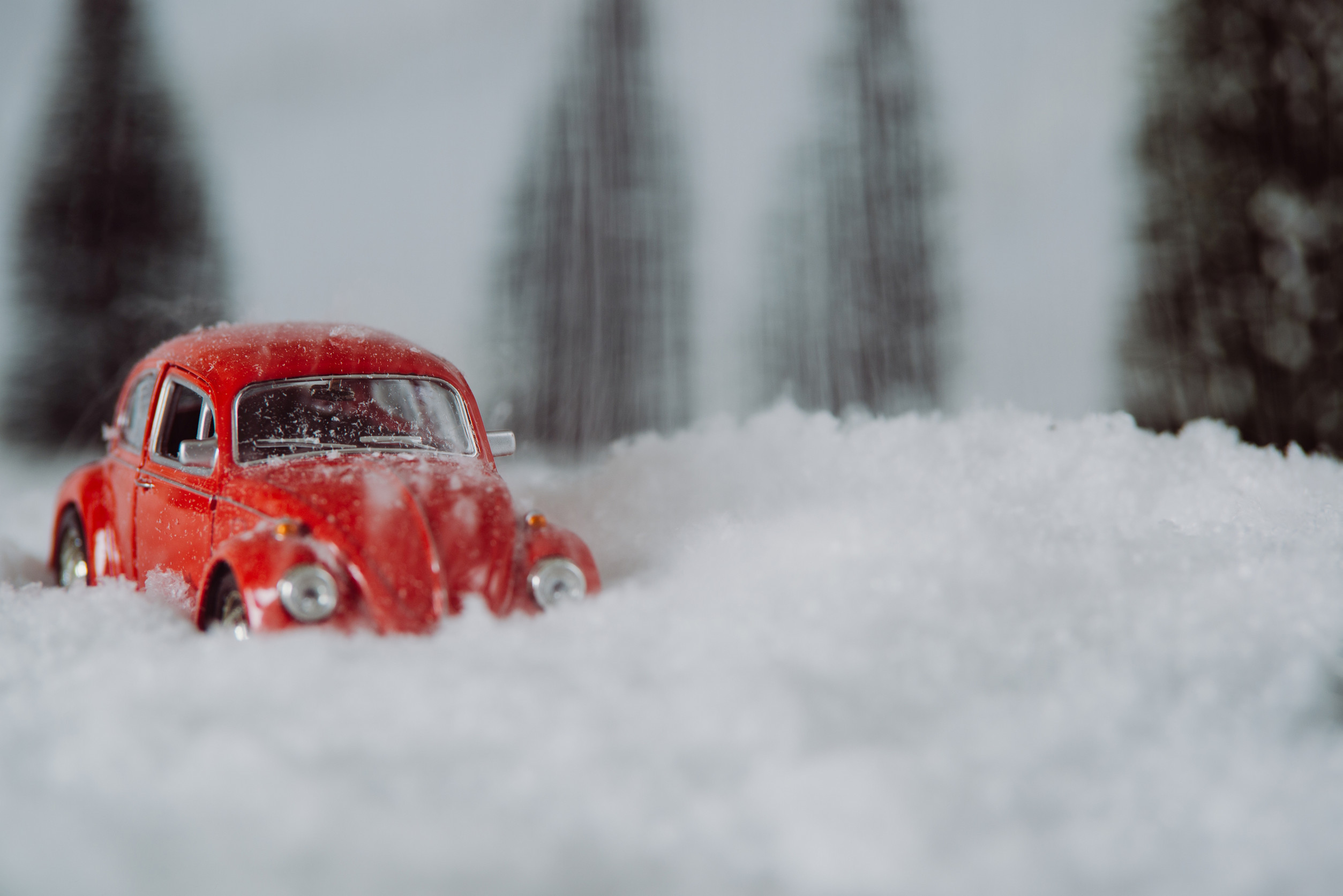

The colder months can be rough on your car. This is because chilly weather can do things like cause the fluids in your vehicle to thicken, reducing performance. It can also decrease air pressure in your tires and put extra strain on your battery. Not to mention, winter weather often causes problems on the road like potholes and uneven surfaces, which can lead to more wear and tear on your car as well. The best thing you can do is prep your car for cold temperatures. Here are eight winter car maintenance tips to help keep your vehicle running smoothly this winter.
1. Check Your Battery Health
As mentioned above, the colder months can put a significant strain on your battery. This is because when the temps drop, the chemical reaction inside the car battery slows down, which reduces the power it can create. You can take your car to an auto parts store and have them test it for free, giving you some peace of mind for the winter months. If your battery is older than three years, it might be worth replacing it to avoid any unwanted surprises. Some other good winter car maintenance tips for your battery include:
- Cleaning the battery terminals to remove corrosion
- Carrying jumper cables or a portable jump starter
- Parking your car in a garage or use a thermal blanket to keep the battery warmer overnight
2. Switch to Winter Tires
Winter tires offer better traction on snow and ice than all-season tires. Check the tread depth of your tires, as worn-out treads can lead to dangerous slips and skids. Keep your tires inflated to the manufacturer’s specifications because cold weather can reduce tire pressure. Other things you can do are:
- Carry chains or traction mats for additional grip in extreme conditions
- Rotate your tires regularly to ensure even wear and maximize their lifespan
3. Top Off Antifreeze and Inspect Coolant Levels
Antifreeze prevents your engine from freezing and protects it against corrosion. Use a coolant tester to ensure your antifreeze mixture is balanced, typically a 50/50 mix of water and antifreeze. Check for any leaks in your radiator, as even small leaks can cause big problems in freezing temperatures. Refill the antifreeze if needed and use a type recommended by your car’s manufacturer. Flush and replace the coolant every few years to keep the system clean. Always keep an extra bottle of antifreeze in your trunk for emergencies.
4. Inspect Wipers and Fill Washer Fluid
Visibility is critical during winter, so inspect your wipers for cracks or stiffness. Replace old wipers with winter wipers designed to handle snow and ice. Use a winter-grade washer fluid that won’t freeze in low temperatures. Ensure your windshield defroster is functioning properly to prevent fogging while driving. Clean your windshield regularly to avoid streaks that impair vision. Finally, always carry an ice scraper and snow brush for quick windshield clearing.
5. Test Your Heating System
A functional heating system is not just for comfort—it’s essential for defrosting and keeping you safe. Turn on your heater before winter arrives to ensure it’s blowing warm air. If the heater is weak or inconsistent, it may indicate issues with the thermostat or coolant. Check the cabin air filter for blockages that could reduce airflow. Consider investing in heated seat covers for added warmth during long drives. Keep blankets in your car in case the heating system fails while you’re on the road.
6. Keep Your Gas Tank Half-Full
Always keep your gas tank at least half-full during winter to avoid freezing fuel lines. Driving on a near-empty tank increases the risk of condensation forming in the tank, which can freeze and block fuel flow. A fuller tank also provides extra weight, improving traction on icy roads. Carry a small gas can in case you find yourself in a remote area without fuel stations. Remember, running out of gas during winter can leave you stranded in dangerously cold conditions. Regularly check your gas gauge and refill as needed.
7. Check Belts, Hoses, and Brakes
Cold weather can cause belts and hoses to crack or snap. Inspect them for visible wear and tear, especially around the edges. Your brakes are critical in icy conditions, so listen for squeaking or grinding noises that might indicate wear. Ensure your brake fluid is topped off and clean for optimal performance. Replace worn-out belts and hoses before they fail to prevent breakdowns. Keep a small tool kit in your car for minor repairs. Schedule a professional inspection if you’re unsure about the condition of these components.
8. Prepare an Emergency Kit
Carry an emergency kit to handle unexpected situations on winter roads. Include items like a flashlight, extra batteries, blankets, gloves, and non-perishable snacks. Add a first aid kit and a portable phone charger for added safety. Keep a small shovel and a bag of kitty litter or sand to help with traction if you get stuck. Reflective triangles or flares can make your car visible if you’re stranded on the roadside. Check your kit regularly to ensure all items are in good condition and replace anything expired or damaged.
Stay Ahead of Winter Challenges
You don’t need to be overwhelmed by winter car maintenance. At the end of the day, it’s all about being prepared for the colder weather. Each of these eight tips will help you avoid expensive breakdowns and ensure your safety on the road throughout the season. Remember, by getting ahead of potential problems, you are investing in your safety and peace of mind.
Read More


Drew Blankenship is a former Porsche technician who writes and develops content full-time. He lives in North Carolina, where he enjoys spending time with his wife and two children. While Drew no longer gets his hands dirty modifying Porsches, he still loves motorsport and avidly watches Formula 1.

